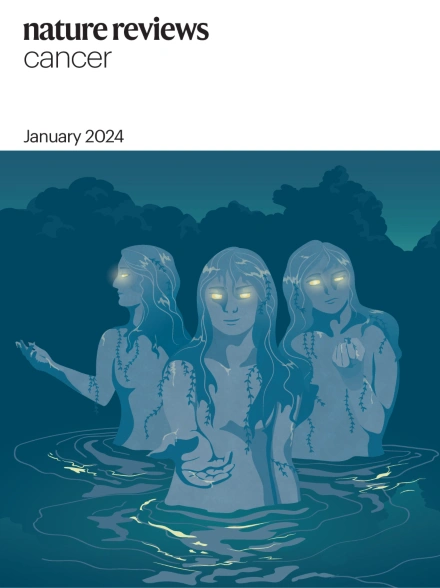回复“TP53突变的异质性需要区分p53拯救疗法”
IF 66.8
1区 医学
Q1 ONCOLOGY
引用次数: 0
摘要
我们感谢Wu等人对我们的评论(Peuget, S., Zhou, X. &;将基于p53的癌症治疗方法应用于临床。中华癌症杂志24,192-215 (2024);他们提出了一些有趣的观点,我们在下面回应(Wu, J., Song, H., Xiao, S. &;TP53突变的异质性需要区分p53拯救疗法。Nat. Rev. Cancer https://doi.org/10.1038/s41568-025-00826-7(2025))2。大约一半的人类癌症表达肿瘤抑制因子p53的突变体,仅由于单个氨基酸残基取代而丧失功能。这些经常过度表达的p53突变体可以被视为一把上膛的枪——但扳机卡住了。正如我们在综述中概述的那样,这使得旨在恢复野生型p53肿瘤抑制功能的癌症治疗策略成为一个非常有吸引力的目标。然而,尽管付出了大量的研究努力,该领域尚未产生基于突变型p53恢复的临床进展。本文章由计算机程序翻译,如有差异,请以英文原文为准。
Reply to ‘Heterogeneity of TP53 mutations necessitates differentiation with p53-rescue therapies’
求助全文
通过发布文献求助,成功后即可免费获取论文全文。
去求助
来源期刊

Nature Reviews Cancer
医学-肿瘤学
CiteScore
111.90
自引率
0.40%
发文量
97
审稿时长
6-12 weeks
期刊介绍:
Nature Reviews Cancer, a part of the Nature Reviews portfolio of journals, aims to be the premier source of reviews and commentaries for the scientific communities it serves. The correct abbreviation for abstracting and indexing purposes is Nat. Rev. Cancer. The international standard serial numbers (ISSN) for Nature Reviews Cancer are 1474-175X (print) and 1474-1768 (online). Unlike other journals, Nature Reviews Cancer does not have an external editorial board. Instead, all editorial decisions are made by a team of full-time professional editors who are PhD-level scientists. The journal publishes Research Highlights, Comments, Reviews, and Perspectives relevant to cancer researchers, ensuring that the articles reach the widest possible audience due to their broad scope.
 求助内容:
求助内容: 应助结果提醒方式:
应助结果提醒方式:


